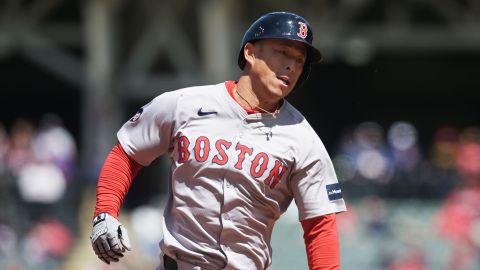BOSTON — This isn’t a video game or fantasy baseball. We’re not dealing with trading cards (they still exist, right?) or POGs (remember those?).
The Major League Baseball non-waiver trade deadline is a nice time to take stock of the league, including one’s own organization, but such due diligence doesn’t always lead to significant movement in the moment. And for the Red Sox, a team stationed in last place in the American League East, that’s OK.
Red Sox general manager Ben Cherington said after Friday’s 4 p.m. ET deadline that the organization had a “productive” week despite its trade inactivity. According to the GM, the Sox considered options, gathered information and ultimately stepped away from the bargaining table without any new toys but with a much clearer view of the marketplace.
Fair enough. It’s not exactly a jolt of positivity — something Boston could use — amid another disastrous season. And it’s understandably frustrating for a fan base to sit in the corner while the rest of the league parties. But the Red Sox obviously weren’t going to be buyers, at least as it pertains to this season, and they, unlike last season, had very few valuable assets to sell. Standing pat is par for the course.
The Red Sox’s 2016 chances will hinge on what the team’s able to accomplish this offseason. Boston needs to improve in several areas, with pitching and defense being chief among them.
“I see the two as connected. I think we need to improve in both areas,” Cherington said. “Some of that undoubtedly will have to be with some additions from outside. We think we know more about what those possibilities are now than we did a week ago, and a lot of that has to do with improving internally — guys that are here right now, getting more out of those guys. But I think the pitching and defense has to improve, and we see those things as connected.”
Perhaps the Red Sox could have been more proactive in addressing such needs at the deadline, giving them a head-start on their offseason retooling, much like they did last season — or tried to do, at least — when they acquired Joe Kelly, Allen Craig and Yoenis Cespedes (since traded for Rick Porcello) in trades involving John Lackey and Jon Lester. But the Red Sox were under more pressure to make deals in 2014 with Lester and fellow left-hander Andrew Miller set to hit free agency. There was no hourglass this time around.
Sure, there’s probably something to be gained from exposing a player to a new environment for half a season before relying on him for meaningful contributions the following campaign. We’re all humans, and easing into a new setting often is easier than being plopped into the middle of it amid lofty expectations. Acquiring players for next season at this year’s deadline would have made sense in that regard.
But on the other hand, the Red Sox now have more time for internal evaluations before determining which prospects they’re comfortable trading. This is especially important in the cases of Eduardo Rodriguez, Henry Owens and Brian Johnson — any of whom could fit into Boston’s 2016 Opening Day rotation plans.
“We’re willing to give up young talent to build a good team going forward in 2016,” Cherington said. “But we have to look at and consider what alternatives are there, and we pursued some things last week and talked about a lot of different things.”
Look, would it have been cool for the Red Sox to land Carlos Carrasco from the Cleveland Indians or Tyson Ross from the San Diego Padres? Sure. Even nabbing Cole Hamels, while more expensive, would have been understandable for a team in desperate need of starting pitching.
But neither Carrasco nor Ross was dealt, and the free-agent market this winter figures to be full of impact arms. So, unless you’re a Hamels fanatic, it’s not like the Red Sox let a huge opportunity slip away, even if it might seem that way on the surface based on their lack of activity relative to others.
Thumbnail photo via Twitter/@JMastrodonato




